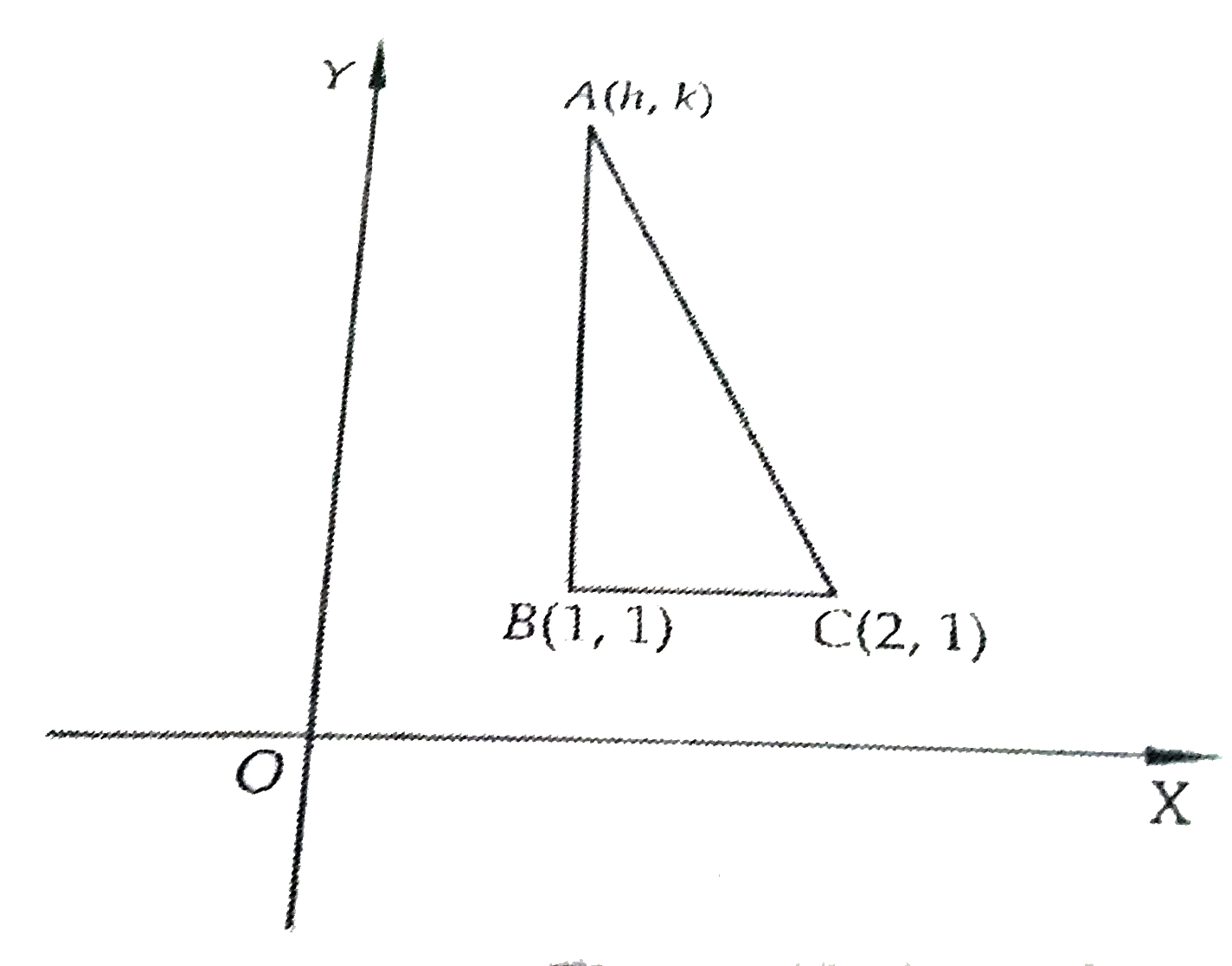Let A(h, k), B(1, 1) and C(2, 1) be the vertices of a right angled triangle with AC as its hypotenuse. If the area of the triangle is 1, then the set of values which k can take is given by
A
{1,3}
B
{0,2}
C
{−1,3}
D
{−3,−2}
Video Solution
Text Solution
The correct Answer is:C
Since ordinates of B and C are same. So BC is parallel to x-axis . Also, ∠CB=90∘ . Therefore, BA is prallele to y-aixs. So, x-coordinate of A is 1 i.e., h=1

Now, Area of ΔABC=1 sq. unit
⇒12BC×AB=1
⇒12×1×|k−1|=1
⇒|k−|=2⇒k−1=±2⇒k=−1,3
|
Topper's Solved these Questions
- CARTESIAN CO-ORDINATE SYSTEM BOOK - OBJECTIVE RD SHARMACHAPTER - CARTESIAN CO-ORDINATE SYSTEM EXERCISE - Section I - Solved Mcqs
29 Videos
- CARTESIAN CO-ORDINATE SYSTEM BOOK - OBJECTIVE RD SHARMACHAPTER - CARTESIAN CO-ORDINATE SYSTEM EXERCISE - Section II - Assertion Reason Type
6 Videos
- BINOMIAL THEOREM AND ITS APPLCIATIONS BOOK - OBJECTIVE RD SHARMACHAPTER - BINOMIAL THEOREM AND ITS APPLCIATIONS EXERCISE - Chapter Test
60 Videos
- CONIC SECTIONSBOOK - OBJECTIVE RD SHARMACHAPTER - CONIC SECTIONSEXERCISE - Section I - Solved Mcqs
1 Videos
Similar Questions
Knowledge Check
Let A(1,k), B(1,1) and C(2,1) be the vertices of a right angled triangle with AC as its hypotenuse. If the area of the triangle is 1, then the set of values which 'k' can take is given by
A(1,3)B(0,2)C(-1,3)D(-3,-2)Let A(1,k),B(1,1) and C(2,1) be the vertices of a right angled triangle with AC as its hypotenuse. If the area of the triangle is 1, then the set of values which k can take is given by:
A(1,3)B(0,2)C(-1,3)D(-3,-2)Let A(1,k),B(1,1) and C(2,1) be the vertices of a right angled triangle with AC as its hypotenuse. If the area of the triangle is 1, then the set of values which k can take is given by:
A{1, 3}B{0, 2}C{-1, 3}D{-3, -2}
Prove that the points (2,-2), (-2, 1) and (5, 2) are the vertices of a right angled triangle. Also find the area of this triangle.
View SolutionProve that the points (−3, 0), (1, −3) and (4, 1) are the vertices of an isosceles right-angled triangle. Find the area of this triangle.
View SolutionProve that (2, −2), (−2, 1) and (5, 2) are the vertices of a right angled triangle. Find the area of the triangle and the length of the hypotenuse.
View SolutionThe maximum area of a right angled triangle with hypotenuse h is :
View SolutionOne of the angles of a right-angled triangle is 15∘, and the hypotenuse is 1 metre. The area of the triangle (in square cm). Is
View Solution
